Edward Jenner
description: 1749-1823 English physician, scientist and pioneer of vaccination
68 results
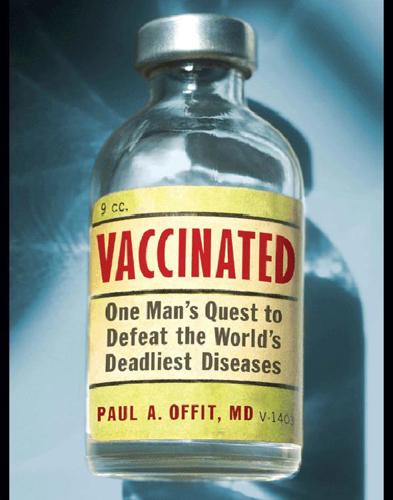
Vaccinated: One Man's Quest to Defeat the World's Deadliest Diseases
by
Paul A. Offit
Published 1 Jan 2007
Indeed, smallpox has killed more people than all other infectious diseases combined. In 1768, when Edward Jenner was thirteen years old and training as an apprentice apothecary in Chipping Sodbury, England, he approached a young milkmaid who appeared ill. “Are you coming down with the smallpox?” he asked. “I cannot take that disease,” she said, “for I have had the cowpox.” Cowpox was a disease that caused blisters on the udders of cows. Sometimes people who milked cows with cowpox would get these same blisters on their hands. Jenner was only a boy, so he didn’t give much thought to the milkmaid’s notion of what prevented diseases. But Edward Jenner remembered that conversation for the rest of his life.
…
In 1861 in Italy forty-one children got syphilis as a result of arm-to-arm transfer when a small amount of blood from one child in the chain, who had an undiagnosed case of the disease, was injected into others. And in 1883 in Bremen, Germany, arm-to-arm transfer caused a massive outbreak of hepatitis. Although Edward Jenner made the first viral vaccine, he didn’t know that smallpox and cowpox were related viruses. That was because he’d never heard of viruses. Edward Jenner made his observations several decades before scientists showed what viruses were and how they reproduced. FROM LOUIS PASTEUR, A FRENCH CHEMIST, HILLEMAN LEARNED THAT vaccines could be made from dangerous human viruses.
…
But I'd bet not one of you knows the name of the scientist who saved more lives than all other scientists combined-a man who survived Depression-era poverty; the harsh, unforgiving plains of southeastern Montana; abandonment by his father; the early death of his mother; and, at the end of his life, the sad realization that few people knew who he was or what he had done: Maurice Hilleman, the father of modern vaccines. Hilleman's science followed a long, rich tradition. In the late 1700s Edward Jenner, a physician working in southern England, made the world's first vaccine. Jenner found that he could protect people from smallpox-a disease that has claimed five hundred million victims-by injecting them with cowpox, a related virus. One hundred years passed. In the late 1800s Louis Pasteur, a chemist working in Paris, made the world's second vaccine.

Deadly Choices: How the Anti-Vaccine Movement Threatens Us All
by
Paul A. Offit M.D.
Published 28 Dec 2010
In Austria, eleven members of the Hapsburg dynasty died of smallpox, as did rulers in Japan, Thailand, Sri Lanka, Ethiopia, and Myanmar. When European settlers brought smallpox to North America, they reduced the native population of seventy million to six hundred thousand. No disease was more feared, more destructive, or more loathsome than smallpox. In 1796, Edward Jenner invented a vaccine that eliminated smallpox from the face of the earth. The idea for how to make it wasn’t his. Jenner was a country doctor working in the hamlet of Berkeley, Gloucestershire, in southern England. In 1770, a milkmaid noticed that when she milked cows with blisters on their udders—and suffered the same blisters on her hands—she was protected against smallpox during the epidemics that periodically swept across the English countryside.
…
To test the milkmaid’s theory, on July 1, 1796, Jenner injected Phipps with pus taken from someone with smallpox; Phipps survived. In a let-ter to a friend, Jenner wrote, “But now listen to the most delightful part of my story. The boy has since been inoculated for the Smallpox which, as I ventured to predict, produced no effect. I shall now pursue my Experiments with redoubled ardor.” Edward Jenner inoculates his young son with smallpox vaccine. (Courtesy of Time & Life Pictures/Getty Images.) Two years later, in 1798—after many similar experiments—Jenner published his observations in a monograph titled Inquiry into the Causes and Effects of the Variolae Vaccinae. (The term vaccination is derived from the Latin vaccinae, meaning “of the cow.”)
…
Organizers made travel arrangements for a hundred thousand people to attend; as a consequence, it was the largest rally of its kind. Actors entertained protesters by playing “doctors riding cows and holding on by the tail, and mothers at upper windows clasping their infants, while policemen were trying to commit a legal burglary at the keyhole in the street below.” The highlight of the show was an effigy of Edward Jenner, hanged, decapitated, and taken to the local police station for arraignment. The spirit of the Leicester rally—a rally described at the time as “a perfect carnival of public merriment,” can be found in today’s anti-vaccine protests. In June 2006, organizers staged a rally in front of the CDC in Atlanta.
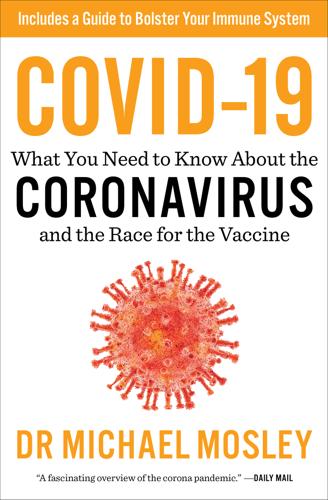
COVID-19: Everything You Need to Know About the Corona Virus and the Race for the Vaccine
by
Michael Mosley
Published 1 Jun 2020
Many people would like these surviving samples to be destroyed, to eliminate any possibility that the virus could escape; others argue that there is still much to learn from a scrap of genetic material that has killed more people than every other infectious disease, put together. Smallpox is the only viral infection we have managed to eradicate. So how did we do it? The Gloucester Doctor The hero of the smallpox vaccine story is an eighteenth-century English doctor called Edward Jenner. As a busy doctor he would have seen a lot of smallpox, which in England in the 1700s was responsible for the deaths of thousands of children every year. The best protection doctors could offer at the time was something called “variolation.” The Chinese had realized, hundreds of years earlier, that you could protect children against the full effects of smallpox by deliberately infecting them with scabs, taken from an infected patient, which had then been left out to dry for a while.
…
Then, toward the end of the eighteenth century, a Dorset farmer called Benjamin Jesty noticed that milkmaids who developed cowpox, which were unsightly pustules on their hands that came from touching the udders of infected cows, rarely got smallpox. He was so impressed by this observation that in 1774 he rubbed scrapings taken from a milkmaid with cowpox into the arms of his wife and two children during a smallpox epidemic. They all survived. The reason Dr. Edward Jenner is remembered, and Benjamin Jesty is not, is because Jenner decided to carry out an extraordinary experiment, which these days would be regarded as completely unethical. Yet it is also an approach that, if conducted more carefully, might prove to be the fastest and most effective way of testing a new Covid-19 vaccine.
…
They desperately needed a lot more money to take their vaccine to the next stage. I’m pleased to say that a few weeks later the health secretary announced the Imperial group were getting £22.5 million to take their work forward. The Oxford Vaccine Another major vaccine group are based at Oxford University’s Jenner Institute, named after Edward Jenner. In an interesting twist of history, although it was Alexander Fleming at St Mary’s who first noticed that a penicillium mold could kill bacteria, it was scientists based in Oxford who in 1941 managed to make enough purified penicillin to treat the first human patient, a policeman called Albert Alexander.
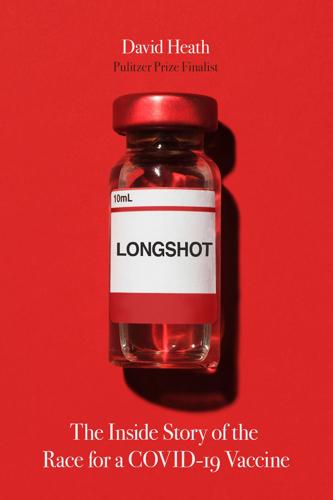
Longshot
by
David Heath
Published 18 Jan 2022
Austin American-Statesman, August 2, 2021, https://www.statesman.com/story/news/politics/politifact/2021/08/02/did-george-washington-mandate-vaccines-smallpox-continental-army-during-revolutionary-war/5456106001. 14. Prabhu, “Arriving at the First Vaccine,” 15. Riedel, “Edward Jenner and the History of Smallpox and Vaccination.” 16. Belongia and Naleway, “Smallpox Vaccine.” 17. Riedel, “Edward Jenner and the History of Smallpox and Vaccination.” 18. “‘Vaccine’: The Word’s History Ain’t Pretty,” Merriam-Webster, accessed August 20, 2021, https://www.merriam-webster.com/words-at-play/vaccine-the-words-history-aint-pretty. 19. Riedel, “Edward Jenner and the History of Smallpox and Vaccination.” 20. Judy Wright Lott, “Smallpox Update,” Medscape, accessed August 20, 2021, https://www.medscape.com/viewarticle/472400_3. 21.
…
That’s on top of 103 million cases of other childhood diseases prevented.4 As a consequence, the life expectancy of the average American today is 78.7 years. For Black Americans, it is now 75.3 years, according to the Centers for Disease Control and Prevention.5 The early vaccines were a product of some luck. Smallpox’s disappearance came nearly two centuries after an English physician named Edward Jenner scientifically established the concept of vaccination. Specifically, Jenner was the first to document that if you inject people with pus from smallpox’s milder cousin, cowpox, they can be protected against the more lethal virus. Smallpox is a terrible, deadly ancient disease. It spreads easily through respiratory droplets and contaminated surfaces.
…
Each time the vaccine came from progressively fresher—and therefore more virulent—part of the cord. After three months, doctors declared young Joseph fully recovered. In 1886 alone, Pasteur went on to inoculate 350 people against rabies in Europe, Russia, and elsewhere. Just one person developed rabies. The method was initially called “Pasteur’s treatment.”29 But in an homage to Edward Jenner, Pasteur gave the artificially weakened microbes given to trigger the body’s natural immune defenses the generic term vaccines. Pasteur’s advances sparked the nascent field of virology. Five more vaccines followed during the first half of the 20th century: diphtheria, pertussis, tetanus, tuberculosis, and influenza.30 The vaccines that rolled out during the next 50 years aimed to banish some of public health’s biggest menaces: polio, measles, pneumonia, hepatitis A and B, meningitis, and chicken pox.31 Creating effective vaccines requires a mixture of science, hunches, and luck.

The Atlas of Disease
by
Sandra Hempel
Published 15 Sep 2018
Smallpox Causal agent Virus of the orthopoxvirus genus Transmission Respiratory route and also through pus from the rash of an infected person Symptoms High fever and pustular rash that left permanent scars Prevalence Eradicated in 1979; so far the only human infectious disease to be so Prevention Vaccination was highly effective Treatment There was no proven treatment but some antiviral drugs were thought to have had some benefit Caricature of Edward Jenner inoculating patients, who are then shown growing cow heads from parts of their anatomy, 1802. An ancient illustration shows Shitala seated on a donkey, a bowl in one of her four hands. In one of many versions of the story, the Hindu goddess is told that she will always be worshipped as long as she carries lentil seeds.
…
She, too, had come across the practice in Turkey. In 1721, when medical ethics left something to be desired, seven condemned prisoners in Newgate jail were offered the chance of escaping execution if they took part in an experiment. Unsurprisingly, they all agreed to be inoculated and they all survived. Then in 1796 the English physician Edward Jenner took the practice to a new level. Jenner grew up in rural Gloucestershire, where country people had long known that a mild disease that was common among milkmaids, known as cowpox, gave protection against smallpox. In a famous experiment, unthinkable today, Jenner inoculated his gardener’s son, eight-year-old James Phipps, not with smallpox but with cowpox and then exposed him to smallpox on several occasions.
…
The strain M. bovis mainly infects cattle, but humans can also catch what is known as bovine TB, usually through drinking infected milk. In the nineteenth century, doctors tried inoculating people with the bovine strain to see if it would protect them against the human variety. Their thinking was based on Edward Jenner’s smallpox vaccine (see here), which gave immunity against that disease by infecting the individual with the related, but much milder, cowpox. Unfortunately, the theory turned out to be disastrously wrong. M. bovis wreaked just as much havoc in the human body as did M. tuberculosis. History found in bones Early evidence of the disease was found in people living in the Eastern Mediterranean around nine thousand years ago in one of the first villages to show signs of agriculture and domesticated animals.
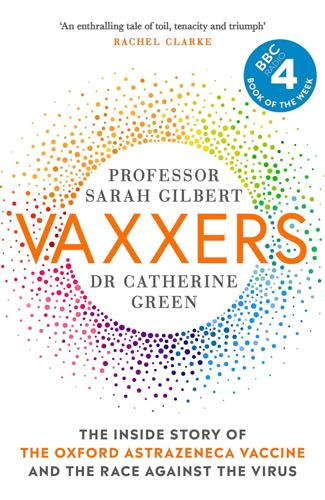
Vaxxers: The Inside Story of the Oxford AstraZeneca Vaccine and the Race Against the Virus
by
Sarah Gilbert
and
Catherine Green
Published 7 Jul 2021
Vaccines aim to give your immune system this memory of what a dangerous virus looks like, so that you can tackle it effectively if you come across it, but without you having to get sick with the virus in the first place. They achieve this by presenting a harmless mimic of the virus to your immune system. There are various ways that vaccines can do this. The vaccinations against smallpox developed in the late eighteenth century by Edward Jenner used a related but less harmful virus, cowpox. Many traditional vaccines present the body with a weakened or inactivated version of the virus. Modern platform or ‘plug and play’ vaccine technologies use the latest understanding of how biology works to show the immune system only the part of the virus that it needs to recognise in order to produce an immune response.
…
It was perhaps the most egregious example of many exploitative experiments that were carried out on children, prisoners, senile patients and other vulnerable groups of people in the United States in the 1940s, 1950s and 1960s, in pursuit of the development of both drugs and vaccines.4 The exposure of these studies, and in particular of the Tuskegee experiment, led to legislation to prevent such things happening again. Any type of medical research on people, including vaccine studies, now requires approval from independent ethics committees, and informed consent from and appropriate communication with all participants. Other aspects of vaccine development have also caused problems in the past. In 1796 Edward Jenner, considered the father of immunology and the person who has saved more lives through his work than any other human, famously vaccinated James Phipps, the 8-year-old son of his gardener, with pus taken from a cowpox blister on the hand of a milkmaid, Sarah Nelmes.5 For decades afterwards, vaccination did not require the production of vials of vaccine as we now know them, but was ‘arm to arm’, transferring material from a blister on the skin of someone who had been vaccinated to the next recipient.
…
Sometimes we were frustrated at the way information got distorted or sensationalised in the reporting: some journalists had an agenda, and others did not take care to check the truth and simply presented as fact what another journalist had said. At the same time, this was our opportunity to reach audiences that normally would take no interest in our work, and to get verified and accurate information out into the world. We were always conscious that our founding father Edward Jenner’s big achievement was not vaccinating against smallpox. That was not his idea and like most scientists he was building on the work of others. What he did, that others didn’t, was publicise his findings and push for the widespread uptake of vaccination. The media as double-edged sword is not a new idea.
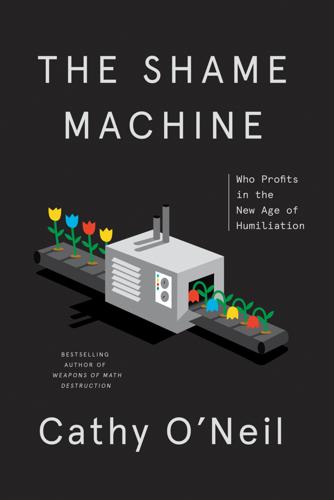
The Shame Machine: Who Profits in the New Age of Humiliation
by
Cathy O'Neil
Published 15 Mar 2022
It was particularly brutal in the eighteenth century, killing an average of four hundred thousand Europeans annually. However, one sector of society seemed to be spared the ravages. In villages and households where the virus wiped out entire families, milkmaids, for some reason, escaped unharmed. Toward the end of that century, a British doctor named Edward Jenner came up with a theory to explain this resistance. It was well known that people who survived one bout of smallpox did not contract it a second time. In previous decades, a number of people had sought protection by scratching their skin and infecting themselves with what they hoped would be minor cases of smallpox.
…
With vaccines, we humans figured out how to hack our own immune systems to defend ourselves. However, our advances are guided by moral choices, some of them valuing certain lives over others. This feeds skepticism around vaccines, and often resistance. A good starting point is the dynamic between Edward Jenner and eight-year-old James Phipps. Jenner’s goal, as a doctor and scientist, was to find a cure. In his view, many lives saved were worth far more than one life risked, especially that of a lowborn boy. On the social scale of eighteenth-century Britain, Jenner occupied a master’s caste. He had servants, including his landless gardener and the gardener’s son.
…
GO TO NOTE REFERENCE IN TEXT “people who get COVID-19 have behaved irresponsibly”: Alain Labrique et al., “Webinar: National Pandemic Pulse Round 1,” covidinequities.org, November 12, 2020, https://www.covidinequities.org/post/webinar-national-pandemic-pulse-round-1. GO TO NOTE REFERENCE IN TEXT smallpox was much more deadly: Stefan Riedel, “Edward Jenner and the History of Smallpox Vaccination,”Baylor University Medical Center Proceedings 18, no. 1 (2005), https://www.tandfonline.com/doi/abs/10.1080/08998280.2005.11928028. GO TO NOTE REFERENCE IN TEXT a debunked and retracted 1998 paper: A. Sabra, J. A. Bellanti, and A.

Viruses: A Very Short Introduction (Very Short Introductions)
by
Crawford, Dorothy H.
Published 27 Jul 2011
Although the incidence and death rates have fallen in the Western world since the introduction of screening, this is not the case in developing countries, whichad to lifelong Chapter 8 Turning the tables It is curiously paradoxical that the prevention of several virus infections was achieved long before anyone knew of the existence of viruses or of the immune responses required to prevent infection. Whereas viruses were first recognized in the 1930s, over 100 years before this, Edward Jenner (1749–1823) succeeded in vaccinating against to induce immunity without severearItpublishsmallpox, the biggest killer virus of all time. Smallpox prevention and eradication The first recorded way of preventing smallpox was inoculation, used in China and India for hundreds of years before it reached Western Europe in the 1700s.
…
Indeed, inoculation did sometimes cause full-blown smallpox and had a mortality rate of 1-2%, but this compares with a 10-20%; death rate from smallpox among the un-inoculated. The technique was used widely in Europe and the USA until the safer method of vaccination was introduced at the beginning of the 19th century. Edward Jenner was a country doctor from Berkeley, Gloucestershire, UK, where it was rumoured that milkmaids’ unblemished skin was due to contracting cowpox, a natural infection of cows’ udders, and thereafter being immune from smallpox. These rumours possibly stemmed from Benjamin Jesty (1736–1816), a farmer from Dorset, who was probably the first to test this theory, in 1774, when he inoculated his wife and children with cowpox, but he did not pursue the experiment any further.
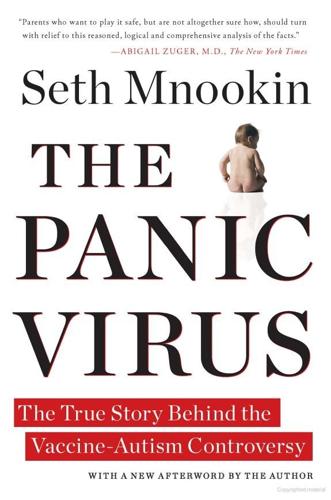
The Panic Virus: The True Story Behind the Vaccine-Autism Controversy
by
Seth Mnookin
Published 3 Jan 2012
Bray, Armies of Pestilence: The Effects of Pandemics on History (Cambridge, U.K.: James Clark, 2004), 114. 31 An English scientist and naturalist named Edward Jenner: “Jenner and Smallpox,” The Jenner Museum, n.d., http://www.jennermuseum.com/Jenner/cowpox.html. 31 Jenner tried inoculating Phipps: Stefan Riedel, “Edward Jenner and the History of Smallpox and Vaccination,” Proceedings of the Baylor University Medical Center 2005;18(1): 21–25. 31 Nelmes was infected: “Campus Curiosities (10): Edward Jenner’s Cow, St. George’s, University of London,” The Times Higher Education (London), July 22, 2005. 32 The relative safety of the cowpox vaccine: Catherine Mark and Jose Rigau-Perez, “The World’s First Immunization Campaign,” Bulletin of the History of Medicine 2009;83(1): 63–94. 33 Anne Harrington calls the feeling: Anne Harrington, The Cure Within (New York: W.
…
I’m going a-milking sir, she said. What’s your fortune, my pretty maid? My face is my fortune, sir, she said.”) It wasn’t until the eighteenth century that gentlemen farmers across Europe began more actively exploring the reasons why this might be the case. An English scientist and naturalist named Edward Jenner, among others, speculated it could have to do with the milkmaids’ frequent contact with open blisters on the udders of cowpox-infected cows. In 1796, Jenner enlisted a milkmaid named Sarah Nelmes and an eight-year-old boy named James Phipps to test his theory. Jenner transferred pus from Nelmes’s cowpox blisters onto incisions he’d made in Phipps’s hands.
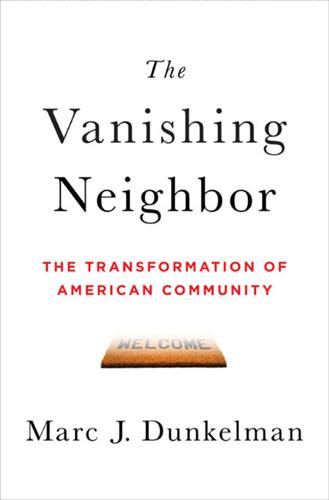
The Vanishing Neighbor: The Transformation of American Community
by
Marc J. Dunkelman
Published 3 Aug 2014
Sampson, Great American City: Chicago and the Enduring Neighborhood Effect (Chicago: University of Chicago Press, 2012), 180–82, 189–91, 195. 20George Packer, The Unwinding: An Inner History of the New America (New York: Farrar, Straus and Giroux, 2013). Chapter 12: Valuable Inefficiency 1Stefan Riedel, “Edward Jenner and the History of Smallpox and Vaccination,” Baylor University Medical Center Proceedings 18, no. 1 (January 2005). 2Eventually, a more effective agent for vaccination was found using the germs for a disease other than cowpox. 3The Pasteur story is from Riedel, “Edward Jenner,” and Arthur Koestler, The Act of Creation (New York: Macmillan, 1964), 112–13. 4Steven Johnson, Where Good Ideas Come From: The Natural History of Innovation (New York: Riverhead Books, 2010), 23–42. 5Richard Ogle, Smart World: Breakthrough Creativity and the New Science of Ideas (Boston: Harvard Business School Press, 2007), 17–19, 55–57. 6Koestler, The Act of Creation, 120. 7Robert A.
…
But to many people, the benefits seemed worth the risk. George Washington, for example, ordered that his troops be variolated after a smallpox epidemic undermined American efforts to conquer Quebec during the Revolutionary War. A few years earlier, a teenage medical student in England had visited a sick dairymaid near Bristol. When Edward Jenner suggested to his patient that she might have smallpox, the dairymaid replied “I shall never have smallpox for I have had cowpox,” exp-ressing the widespread belief—then unproven within the scientific community—that victims of a fairly mild disease common among people who handled cattle were immune to the more serious smallpox.
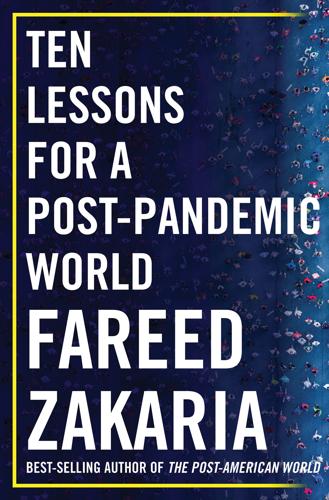
Ten Lessons for a Post-Pandemic World
by
Fareed Zakaria
Published 5 Oct 2020
Viktor Zhdanov, attended the annual meeting of the WHO’s governing body, the World Health Assembly. It was the first time a Soviet delegation had attended since the WHO’s founding a decade earlier. Zhdanov urged the organization to mount a global campaign to eradicate smallpox once and for all. In a nod to the United States, he quoted in his speech a letter Thomas Jefferson had written to Edward Jenner, who had pioneered the smallpox vaccine. “Future nations will know by history only that the loathsome small-pox has existed,” Jefferson wrote. It was an early attempt to put into action Nikita Khrushchev’s post-Stalin plan of “peaceful coexistence” with the West. The United States was resistant at first, not least for thinking the Soviet proposal would pull attention away from American-led efforts to eradicate malaria.
…
Viktor Zhdanov: This account of US-Soviet collaboration on smallpox comes from the Harvard historian Erez Manela, in his excellent and authoritative “A Pox on Your Narrative: Writing Disease Control into Cold War History,” Diplomatic History 34, no. 2 (April 2010), https://scholar.harvard.edu/files/manela/files/manela-pox-dh.pdf. He quotes Thomas Jefferson’s letter to Edward Jenner, May 14, 1806, The Thomas Jefferson Papers, Series 1, General Correspondence, Library of Congress, Washington, DC. 241 officially eradicated: “Smallpox,” US Centers for Disease Control and Prevention, last reviewed July 12, 2017, https://www.cdc.gov/smallpox/index.html. Credits Portions of “Lesson Nine: The World Is Becoming Bipolar” and “Lesson Ten: Sometimes the Greatest Realists Are the Idealists” draw on “The Self-Destruction of American Power.”
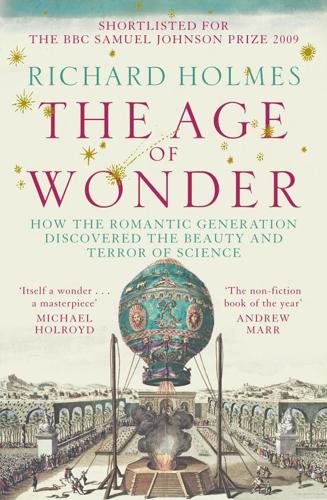
The Age of Wonder
by
Richard Holmes
Published 15 Jan 2008
The way was now open for Banks to publish his own journal, over 200,000 words in manuscript, together with some of the hundreds of beautiful illustrations and line drawings he had commissioned. A folio volume of 800 plates was planned, together with extensive journal extracts. Solander agreed to help him with the cataloguing and editorial work, and various assistants were hired, including the young Edward Jenner. It was intended as the greatest scientific publication of Banks’s lifetime, his masterpiece. 9 The Pacific voyage, despite its final horrors of sickness and death, had not dampened Banks’s scientific wanderlust. ‘To explore is my Wish,’ he wrote the following spring, ‘but the Place to which I may be sent almost indifferent to me, whether the Sources of the Nile, or the South Pole are to be visited, I am equally ready to embark on the undertaking.’79 In summer 1772 Cook was commissioned by the Admiralty to undertake a second, much larger Pacific expedition, this time with several ships.
…
Besides expressing his gratitude and his determination to do ‘something for the public good’, he included an interesting tour d’horizon of scientific developments as he saw them in January 1801. While public affairs, economic hardship and the war with France filled him with ‘confusion’ and dismay, the immense possibilities of scientific research had never looked brighter. The cowpox inoculation, pioneered by Dr Edward Jenner, was becoming general ‘not in England alone, but over the whole of Europe’, and promised to annihilate smallpox. Galvanism held out immense possibilities, and ‘promises to unfold some of the laws of our nature’. Even the Pneumatic Institution, ‘in spite of the political odium attached to its founder’, might yet cure some ‘obstinate diseases’.
…
The journals of Joseph Banks and his colleagues in the South Seas, of Gilbert White in Hampshire, of Coleridge in Somerset, of Dorothy Wordsworth in the Lake District, all demonstrate this (almost sacred) attention to things simply and precisely observed. William Herschel wrote a brilliant paper on the nature of objective observation, and its particular problems in astronomy. Goethe wrote another in 1798 on the general problems of subjectivity, ‘Empirical Observation and Science’. In 1788 Edward Jenner published a chilling paper in the Royal Society’s Philosophical Transactions on observing the murderous activity of a baby cuckoo in a sparrow’s nest. Jenner’s quiet, meticulous description of the baby cuckoo (while still blind) relentlessly wheelbarrowing its smaller ‘rival’ sparrow chick backwards, between its half-formed wings, up the side of the nest until it was thrown out, has all the power of a moral allegory, but remains completely objective in tone.

10% Human: How Your Body's Microbes Hold the Key to Health and Happiness
by
Alanna Collen
Published 4 May 2015
We have come to depend on our microbes, and without them, we would be a mere fraction of our true selves. So what does it mean to be just 10 per cent human? ONE Twenty-First-Century Sickness In September 1978, Janet Parker became the last person on Earth to die of smallpox. Just 70 miles from the place where Edward Jenner had first vaccinated a young boy against the disease with cowpox pus from a milkmaid, 180 years earlier, Parker’s body played host to the virus in its final outing in human flesh. Her job as a medical photographer at the University of Birmingham in the UK would not have put her in direct jeopardy were it not for the proximity of her dark room to the laboratory beneath.
…
Medical innovations and public health measures – largely those of the late nineteenth and early twentieth centuries – have made a profound difference to life as a human. Four developments in particular have taken us from a two-generation society to a four-, or even five-generation society in just one, long, lifetime. The first and earliest of these, courtesy of Edward Jenner and a cow named Blossom, is, of course, vaccination. Jenner knew that milkmaids were protected from developing smallpox by virtue of having been infected by the much milder cowpox. He thought it possible that the pus from a milkmaid’s pustules might, if injected into another person, transfer that protection.

Miracle Cure
by
William Rosen
Published 14 Apr 2017
The groundbreaking understanding of anthrax—a combination of Koch’s spores and Pasteur’s dilutions—was the first to link the German physician with the French chemist. It would not be the last. The next step for Pasteur was the transformation of his experimental results into a practical therapy. A hundred years before, the English physician Edward Jenner had demonstrated that exposing healthy subjects to fluid taken from (relatively benign) cowpox lesions conferred immunity to smallpox. Pasteur himself had discovered that injecting hens with cultures containing chicken cholera that had lost virulence offered the same protection against that disease.
…
* His practice was eventually debunked by an all-star commission appointed by King Louis XVI that included Antoine Lavoisier and Benjamin Franklin. * It is no coincidence that the Latin root for “patient” is patior: “I am suffering.” * Also, that exposure conferred lifetime immunity, which is why vaccination against smallpox was being practiced in Asia centuries before Edward Jenner’s 1796 inoculation of an eight-year-old boy named James Phipps (with lesions containing cowpox—vaccinia—rather than the variola virus that caused smallpox). * Mortality tables aren’t always as accurate as they are precise. A table showing the reasons for 942 recorded deaths by “Diseases and Casualties” in the city of Boston during the year 1811 lists such causes as “drinking cold water” (2 deaths), “sudden death” (25), “white swelling,” and “decay.”
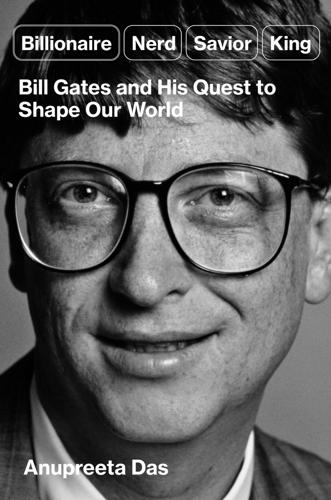
Billionaire, Nerd, Savior, King: Bill Gates and His Quest to Shape Our World
by
Anupreeta Das
Published 12 Aug 2024
Chapter 7 Global Savior, Big Philanthropist The Vaccine Czar The history of the world is heavy with tales of epidemics, disease, and death. Terrifying plagues, pestilences, and poxes have felled populations through the centuries. Fevers and humors, outbreaks and contagions have confounded generations of medical experts. But the history of virulent disease is also the story of human ingenuity. In May 1796, the British physician Edward Jenner inoculated a healthy eight-year-old boy with cowpox, a milder cousin of smallpox, the deadly virus. Two months later, after the boy had recovered, Jenner introduced matter from a smallpox lesion into him, and found that the boy did not develop the disease.1 He named the process “vaccination,” after “vacca,” the Latin name for a cow, and in doing so, set humanity on the long course to modern vaccines.
…
McComb, and Eren Kuzucu, “Investing at Pivotal Ventures,” Harvard Business School Case 221-033, October 2020 (revised December 2020). 27. Gates, The Moment of Lift, 87–88. 28. Melinda French Gates, “Decisions Are Still Being Made for Women, Instead of By Them. We’re Suffering As a Result,” Time, June 21, 2022. Chapter 7: Global Savior, Big Philanthropist 1. Stefan Riedel, “Edward Jenner and the History of Smallpox and Vaccination,” Baylor University Medical Center Proceedings 18, no. 1 (2005): 21–25. 2. Helen Branswell, “Bill Gates Slams ‘Shocking’ U.S. Response to Covid-19 Pandemic,” Stat, September 14, 2020. 3. Erin Banco, Ashleigh Furlong, and Lennart Pfahler, “How Bill Gates and Partners Used Their Clout to Control the Global Covid Response—With Little Oversight,” Politico, September 14, 2022. 4.

What Technology Wants
by
Kevin Kelly
Published 14 Jul 2010
Dig deep enough in the history of any type of discovery in any field and you’ll find more than one claimant for the first priority. In fact, you are likely to find many parents for each novelty. Sunspots were first discovered not by two but by four separate observers, including Galileo, in the same year, 1611. We know of six different inventors of the thermometer, and three of the hypodermic needle. Edward Jenner was preceded by four other scientists who all independently discovered the efficacy of vaccinations. Adrenaline was “first” isolated four times. Three different geniuses discovered (or invented) decimal fractions. The electric telegraph was reinvented by Joseph Henry, Samuel Morse, William Cooke, Charles Wheatstone, and Karl Steinheil.
…
The same argument can be made about whole libraries’ worth of knowledge—herbal wisdom, traditional practices, spiritual insights—that are “discovered” by the educated, but only after having been long known by native and folk peoples. These supposed “discoveries” seem imperialistic and condescending—and often are. Yet there is one legitimate way in which we can claim that Columbus discovered America, and the French-American explorer Paul du Chaillu discovered gorillas, and Edward Jenner discovered vaccines. They “discovered” previously locally known knowledge by adding it to the growing pool of structured global knowledge. Nowadays we would call that accumulating of structured knowledge science. Until Du Chaillu’s adventures in Gabon any knowledge about gorillas was extremely parochial; the local tribes’ vast natural knowledge about these primates was not integrated into all that science knew about all other animals.
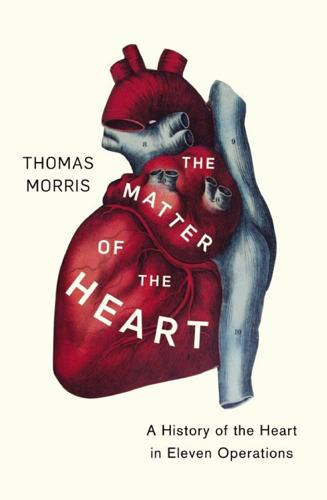
The Matter of the Heart: A History of the Heart in Eleven Operations
by
Thomas Morris
Published 31 May 2017
At a bad-tempered meeting of the governors of St George’s Hospital in London he became involved in a row about student admissions. Unpleasant words were exchanged, and Hunter grew so irate that he rose from the table and walked out. As he entered the next room he turned to a colleague as if to speak to him, groaned, and fell down dead.1 To one of his friends, at least, his death came as no surprise. Edward Jenner, who would later attain everlasting fame by discovering vaccination against smallpox, had realised a decade earlier that Hunter was seriously ill and that his ailment would probably kill him – but decided against raising it on the grounds that ‘it must have brought on an unpleasant conference between Mr Hunter and me’.2 Hunter had himself first noticed worrying symptoms in 1773, and thanks to the meticulous notes he was in the habit of taking about his own health we know what they were.
…
During heavy exercise it consumes four times more than the brain, despite being only a fifth of its weight. Given the vital function of the coronary arteries, any blockage impeding the flow of blood to the heart can clearly have catastrophic consequences. Fothergill’s findings were confirmed shortly afterwards by Edward Jenner during an autopsy on the body of another angina patient: while dissecting the heart his knife struck an object so hard that it damaged the blade. His first thought was that some plaster had fallen from the ceiling, but then he saw that the coronaries had become ‘bony canals’.10 He became convinced that coronary artery disease was the cause of angina pain, but when John Hunter started to suffer the same symptoms Jenner decided against making his theory public.
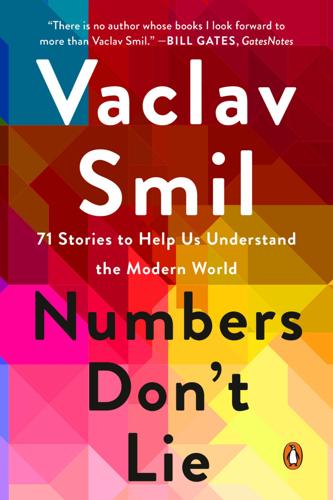
Numbers Don't Lie: 71 Stories to Help Us Understand the Modern World
by
Vaclav Smil
Published 4 May 2021
Measures needed to minimize this untimely mortality cannot be ranked as to their importance: clean drinking water and adequate nutrition are as vital as disease prevention and proper sanitation. But if you judge them by their benefit-cost ratios, vaccination is the clear winner. Modern vaccination dates back to the 18th century, when Edward Jenner introduced it against smallpox. Vaccines against cholera and plague were created before the First World War, and others against tuberculosis, tetanus, and diphtheria before the Second. The great postwar breakthroughs included routine vaccinations against pertussis (whooping cough) and polio. Today, the standard practice everywhere is to inoculate children with a pentavalent vaccine that prevents diphtheria, tetanus, pertussis, and polio, as well as meningitis, otitis, and pneumonia, three infections caused by Haemophilus influenzae type B.

Getting Better: Why Global Development Is Succeeding--And How We Can Improve the World Even More
by
Charles Kenny
Published 31 Jan 2011
Between 15 and 45 percent of victims eventually perish—in many cases as a result of septic shock. Smallpox has been one of the world’s greatest killers. Around 3.5 million Aztec Indians died of the disease after it was introduced by Spanish conquistadors. In Europe at the end of the eighteenth century, the disease was killing 400,000 each year. Dr. Edward Jenner introduced smallpox vaccination in 1796, and yet deaths continued worldwide—including that of China’s Tongzhi Emperor, as we saw in Chapter 5. Over the course of the twentieth century, smallpox was still responsible for a total of between 300 million and 500 million deaths. In 1959, the World Health Assembly adopted the global eradication of smallpox as a goal.

The Techno-Human Condition
by
Braden R. Allenby
and
Daniel R. Sarewitz
Published 15 Feb 2011
Most experts on early human evolution agree that primitive tools and human brains co-evolved; that the imaginative capacity of the tool-maker was both a product of and a requirement for the development of more effective stone tools and more rapid innovation. Education is, of course, a conscious process of brain modification, and culture is a process of passing such modifications from generation to generation. Edward Jenner started modifying immune systems with cowpox pus in 1796, and the more dangerous practice of variolating with smallpox In the Cause-and-Effect Zone 17 pus had apparently been used in China since about 1000 A.D. The rise of the printing press and the widespread distribution of printed vernacular texts created an unprecedented and farflung cognitive and information network, one that had profound culturally transforming impacts (later amplified by the rise of telegraph and telephone networks).
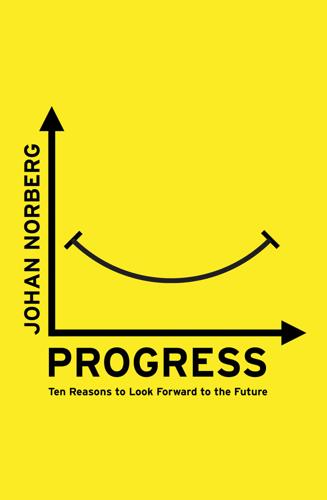
Progress: Ten Reasons to Look Forward to the Future
by
Johan Norberg
Published 31 Aug 2016
After the British royal family was variolated in 1721, the practice spread rapidly and soon ordinary people were also inoculated.13 An eight-year-old boy was variolated with smallpox in Berkeley, Gloucestershire in 1757, and only developed a mild case of smallpox, and immunity which saved his life from later epidemics. His name was Edward Jenner. He would devote his life to finding a better and safer response. He had heard tales that dairymaids were protected after they had suffered from cowpox, and started to inoculate people with it to make them immune from smallpox. The Latin word for cow is vacca, and vaccinus means of or from a cow, so Jenner called his new procedure ‘vaccination’.
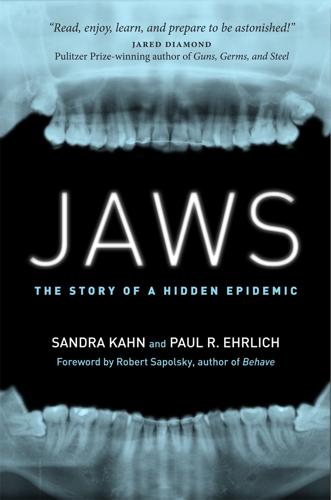
Jaws
by
Sandra Kahn,Paul R. Ehrlich
Published 15 Jan 2018
Semmelweis was a Hungarian physician who showed in the 1840s that the dangerous fever, which killed about 10 percent (in some cases, up to 30 percent) of women in maternity wards, could be nearly eliminated by careful hand washing by physicians. Doctors largely refused to believe his empirical evidence because it conflicted with then-current theories of contagion, which did not yet include Louis Pasteur’s germ theory. They recognized that diseases could be transferred from person to person, as Edward Jenner had shown by spreading cowpox from individual to individual to “vaccinate” them against smallpox. But they had no idea what the causative agent was, and many still believed that small animals like flies could be spontaneously generated from nonliving things like garbage. Semmelweis himself came closer than most to the truth, thinking it involved transfer of minute particles of corpses when doctors did autopsies and then did not wash their hands before treating patients.
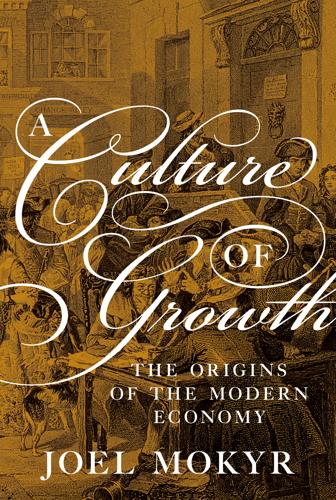
A Culture of Growth: The Origins of the Modern Economy
by
Joel Mokyr
Published 8 Jan 2016
In practice, this was an age in which these things mattered a great deal, and they mattered more than most citizens of the Republic of Letters would have liked to admit.16 The Republic of Letters was a transnational institution, but one that had to exist in a political reality. Many of those defending Newton in his priority dispute with Leibniz did so out of national loyalty, although referring to a kind of “philosophical jingoism” in the early eighteenth century (Shank, 2008, p. 181) seems excessive. Whether the sciences “were never at war” as Edward Jenner famously remarked may still be an open question. The ideals of the Republic Letters, in which Diderot could tell Hume that the latter “belonged to all nations” and would never be asked for his birth certificate (Gay, 1966, p. 13), did not always mesh with the reality on the ground. The eighteenth century after all was not just the age of Enlightenment, it was also an age of mercantilism, and the information made available freely in the Republic of Letters was often gathered to serve the interests of the state—as Bacon had advocated.
…
The Industrial Enlightenment, then, should be understood as a primarily empirical project, with only occasional flashes of analytical insight before the nineteenth century. Yet the collection and analysis of data was obviously of help in many practical applications. The search for empirical regularities in the data, to use a modern term, inspired Edward Jenner to see why some people seemed immune to smallpox. In animal breeding, in which British farmers scored significant advances, empirics was all they had to go by in the absence of any theory of evolution, let alone genetics. In metallurgy and engineering, the individuals doing the inventing on the ground (such as Henry Cort and Richard Trevithick) consulted empirical scientists, such as Joseph Black and Davies Giddy (Gilbert).

Age of the City: Why Our Future Will Be Won or Lost Together
by
Ian Goldin
and
Tom Lee-Devlin
Published 21 Jun 2023
Their discoveries led not only to efforts by cities around the world to clean up their water supplies, but also to the adoption of basic hygiene practices we now take for granted – like washing hands or cleaning medical implements after use – that play a crucial role in preventing disease transmission. We also owe the wide range of vaccines we now have available to the pioneering thinkers behind the germ theory of disease. Vaccines have a long history. Inoculation against smallpox became commonplace in Europe early in the nineteenth century after an English country doctor named Edward Jenner discovered that infecting a patient with the far less dangerous cowpox conferred immunity against smallpox. It was not, however, until the late nineteenth century that Louis Pasteur was able to apply the insights of germ theory to create a more systematic approach for weakening bacteria and viruses to make them suitable for inoculations against a wide variety of diseases.

Lonely Planet London
by
Lonely Planet
Published 22 Apr 2012
Don’t Miss... » Diplodocus skeleton » Dinosaur Gallery » Darwin Centre » Earth Galleries » Wildlife Garden Practicalities » Offline map » 7942 5000; www.nhm.ac.uk; Cromwell Rd SW7 » admission free » 10am-5.50pm » » South Kensington Hyde Park to Chelsea Top Sights Apsley HouseF3 Hyde ParkD2 Kensington PalaceA3 Natural History Museum C4 Science MuseumC4 Victoria & Albert Museum C4 Sights 1 Albert MemorialB3 2 Australian War MemorialF3 3 Brompton Oratory C4 4 Carlyle's House D7 5 Chelsea Old Church C7 6 Chelsea Physic Garden E7 7 Diana, Princess of Wales Memorial Playground A2 8 Edward Jenner StatueC1 Elfin Oak (see 7) 9 Holocaust Memorial Garden E3 10 Kings RoadD6 11 Marble Arch E1 12 Michelin HouseD5 13 National Army MuseumE6 14 New Zealand War MemorialF3 Orangery (see 39) 15 Peter Pan Statue C2 16 Princess Diana Memorial FountainC3 17 Queen Elizabeth Gate F3 Royal Albert Hall (see 52) 18 Royal Hospital ChelseaE6 19 Saatchi Gallery E5 20 Serpentine GalleryC3 21 Serpentine Sackler GalleryC2 22 Speakers' Corner E1 23 Tyburn ConventD1 24 Tyburn Tree SiteE1 25 Wellington Arch F3 26 Westminster Cathedral G4 Eating Bibendum (see 12) 27 Byron C7 28 Daquise C5 29 Dinner by Heston BlumenthalE3 30 El PirataF2 31 Galvin at Windows F2 32Gordon RamsayE7 33HachéB7 34 Hunan F6 35 Kazan G5 36 Launceston Place A4 37 Min Jiang A3 38 NobuF2 39 Orangery A2 40 Penny Black B7 41 Pimlico Road Farmers MarketF5 42 Racine D4 43 Rasoi Vineet Bhatia D5 44 Roussillon F6 45 Tom's Kitchen D6 46 Zuma D3 Drinking & Nightlife 47 Drayton Arms B6 48 Nag's Head E3 49 Queen's Arms B4 Entertainment 50 Cadogan Hall E5 51 Ciné Lumière C5 52 Royal Albert Hall B3 53 Royal Court Theatre E5 Shopping 54 Butler & Wilson C5 55 Church's D4 Conran Shop (see 12) 56 HarrodsD4 57 Harvey Nichols E3 58John Sandoe BooksE5 59 Limelight Movie Art C7 60 Lulu Guinness E5 61 Rippon Cheese Stores G5 Sleeping 62 Aster HouseC5 63Astor Hyde ParkB3 64Astor KensingtonA5 65Astor VictoriaH5 66B+B BelgraviaF5 67BlakesB6 68 Cadogan HotelE4 69easyHotel VictoriaG5 70GoreB4 71HalkinF3 72Knightsbridge HotelD4 73LanesboroughF3 74Luna Simone HotelH5 75MeiningerB5 76Number SixteenC5 77San Domenico HouseD5 78Windermere HotelG6 Kensington & Hyde Park Eating | Drinking & Nightlife | Entertainment | Shopping Sights Knightsbridge, Kensington & Hyde Park Victoria & Albert Museum Museum Offline map Google map See Click here.
…
If you have kids, the Diana, Princess of Wales Memorial Playground Offline map Google map , in the northwest corner of the gardens, has some pretty ambitious attractions for children. Next to the playground is the delightful Elfin Oak Offline map Google map , an ancient tree stump carved with elves, gnomes, witches and small animals. George Frampton’s celebrated Peter Pan statue Offline map Google map is close to the lake. On the opposite side is a statue of Edward Jenner Offline map Google map , who developed a vaccine for smallpox. Top Sights Kensington Palace Built in 1605 the palace became the favourite royal residence under William and Mary of Orange in 1689, and remained so until George III became king and relocated to Buckingham Palace. In the 17th and 18th centuries, Kensington Palace was variously renovated by Sir Christopher Wren and William Kent.

Doing Good Better: How Effective Altruism Can Help You Make a Difference
by
William MacAskill
Published 27 Jul 2015
Since smallpox was an exclusively human disease, he argued, it would be easier to eradicate than mosquito-borne infections such as malaria. He pointed to the Soviet Union’s success at eliminating smallpox, despite its vast territory and poor transportation networks. He referenced Thomas Jefferson’s letter to the inventor of the smallpox vaccine, Edward Jenner: “I avail myself of this occasion of rendering you a portion of the tribute of gratitude due to you from the whole human family. Medicine has never before produced any single improvement of such utility. . . . Future nations will know by history only that the loathsome small-pox has existed and by you has been extirpated.”
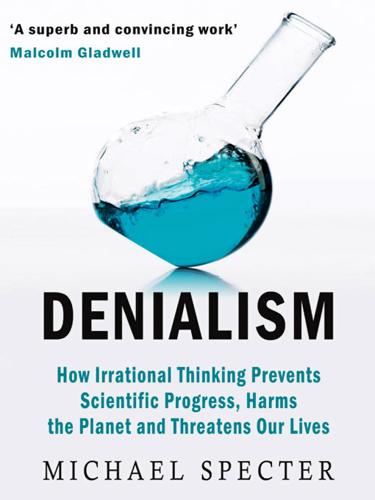
Denialism: How Irrational Thinking Hinders Scientific Progress, Harms the Planet, and Threatens Our Lives
by
Michael Specter
Published 14 Apr 2009
So here is the British royalty in 1724 understanding that it is really important to vaccinate your children. It is just amazing to me that you can take this . . . and move to where we are today.” At that, Enriquez stood up to fetch another armful of documents. “These are Jenner’s notebooks on vaccination,” he explained. Edward Jenner is generally credited with having invented the smallpox vaccine, after noting that milkmaids rarely got the disease. He theorized, correctly as it would turn out, that the pus in the blisters that milkmaids received from cowpox (a disease similar to smallpox, but much less virulent) protected them from smallpox.

Quackery: A Brief History of the Worst Ways to Cure Everything
by
Lydia Kang
and
Nate Pedersen
Published 16 Oct 2017
This process of using animal products in medicine is called “zootherapy,” but it’s no trip to the zoo. Occasionally, animal research has led to significant, even crucial, discoveries. The fruit fly played a critical role in Thomas Hunt Morgan’s early studies of genetics, Ivan Pavlov demonstrated the relationship between sense stimulation and body functions with his dogs, and Edward Jenner developed the first smallpox vaccine from cows (and promptly coined the term vaccination from the Latin vacca for “cow”). We’ve also employed animals to aid our own healing processes: Leeches, for example (see Leeches, page 211), were for many years considered an important weapon in the medicinal arsenal, snails have long been effective at healing burns, spiderwebs can be used to bind a wound, and, even today, maggots are used to clean out wounds.
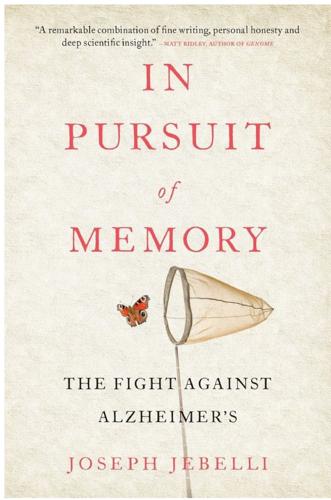
In Pursuit of Memory: The Fight Against Alzheimer's
by
Joseph Jebelli
Published 30 Oct 2017
Rational therapies, such as diets, baths and herbal medicines, came into practice: salad greens, barley water and milk, for example, were encouraged to replace red meat and wine; others endorsed a blend of aloes, black hellebore and colocynth.7 When the Enlightenment began, a string of discoveries in physics, chemistry and medicine–by Isaac Newton, Joseph Priestley, John Dalton, Luigi Galvani, Alessandro Volta and Edward Jenner–pointed towards the possibility of physical explanations for mental phenomena. The French philosopher René Descartes thought that experiences make tiny pores in the brain like needles making a pattern of holes in a linen cloth.8 David Hartley, the eighteenth-century English physician, claimed that nerve vibrations create sensations and memory, and that violent vibrations are the cause of mental illness.9 These ideas were vague and incomplete, but they were free of mysticism and the supernatural.

The Lucky Years: How to Thrive in the Brave New World of Health
by
David B. Agus
Published 29 Dec 2015
Unfortunately, we in the scientific community don’t know yet how to present data in ways that will reliably persuade people to change their minds. The vaccine wars of today, stirred up most recently by outbreaks of vaccine-preventable diseases like whooping cough and measles, are nothing new. They are as old as vaccination itself. When Edward Jenner, a brilliant English country doctor, developed the vaccine for smallpox in 1796, he was both praised and mocked, lauded and feared. Religious authorities accused him of playing God, and even the equally bright economist Thomas Malthus lost sleep over the thought that vaccines would lead to unsustainable surges in the number of people on the planet.
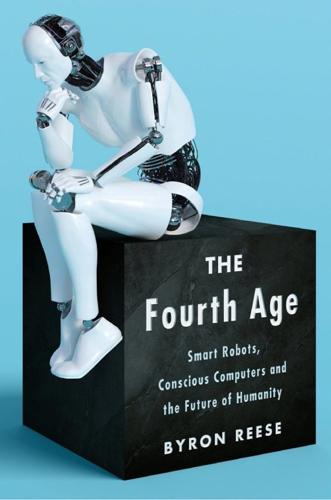
The Fourth Age: Smart Robots, Conscious Computers, and the Future of Humanity
by
Byron Reese
Published 23 Apr 2018
And we can have some confidence that it will be eradicated. Why such optimism? Consider the worst disease of all time: smallpox. This scourge plagued humanity for ten thousand years. In the twentieth century alone, it killed 400 million people, more people than have died in all wars in all of history. Just think about that. And we eliminated it! Edward Jenner made a vaccination for it in the 1790s. This is astonishing because this was before Louis Pasteur was even born, and he is the person who developed germ theory. So we learned to vaccinate against smallpox before we knew it was caused by germs, with technology little better than stone knives and bear skins.
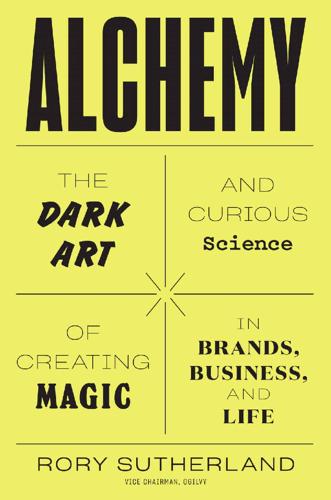
Alchemy: The Dark Art and Curious Science of Creating Magic in Brands, Business, and Life
by
Rory Sutherland
Published 6 May 2019
.* In 1847, when Ignaz Semmelweis decisively proved that hand-washing by doctors would cut the incidence of puerperal fever, a condition that could be fatal during childbirth, he was spurned. All too often, what matters is not whether an idea is true or effective, but whether it fits with the preconceptions of a dominant cabal.* I had always innocently assumed that after Edward Jenner discovered a vaccination against smallpox he would have presented his findings before sitting back to enjoy the acclaim. The truth was nothing of the kind; he spent the rest of his life defending his idea against a large number of people who had profited from an earlier practice called variolation, and were reluctant to admit that anything else was better.

How to Prevent the Next Pandemic
by
Bill Gates
Published 2 May 2022
But no matter how quickly we make a new vaccine during an outbreak, it won’t do any good if it takes years to get through the approval process. So let’s look in detail at how that process works, and how we might accelerate it without sacrificing safety or effectiveness. * * * — Humans invented vaccines long before they invented ways to make sure they worked. The British physician Edward Jenner is considered the founder of modern vaccines, having shown in the late eighteenth century that inoculating a young boy with cowpox—a disease related to smallpox, but with mild health effects—made him immune to smallpox too.[*5] The word vaccine comes from the name of the cowpox virus, vaccinia, which in turn is derived from vacca, the Latin word for cow.

The Obesity Code: Unlocking the Secrets of Weight Loss
by
Jason Fung
Published 3 Mar 2016
Before the development of vaccines, it was viral infection itself that caused resistance to further infection. If you became infected with measles virus as a child, you’d be protected from reinfection with measles for the rest of your life. Most (though not all) viruses work this way. Exposure causes resistance. Vaccines work on exactly this principle. Edward Jenner, working in rural England, heard the common tale of milkmaids developing resistance to the fatal smallpox virus because they had contracted the mild cowpox virus. In 1796, he deliberately infected a young boy with cowpox and observed how he was subsequently protected from smallpox, a similar virus.
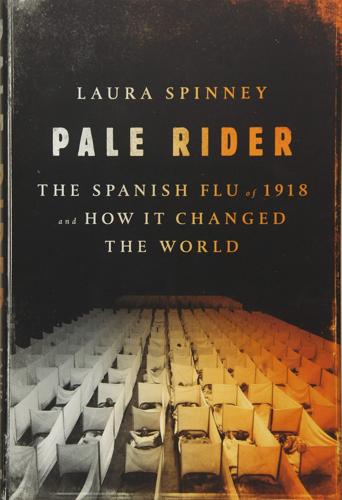
Pale Rider: The Spanish Flu of 1918 and How It Changed the World
by
Laura Spinney
Published 31 May 2017
They belonged to observant individuals who had noticed two things: that school-age children were not the primary targets of this particular flu, and that even when they did fall sick, it wasn’t clear where they had caught the disease–at home, at school, or somewhere in between. If it wasn’t school, then closing the schools would neither protect the children nor stop the spread. The most heated discussions of all, however, revolved around vaccination. Vaccination was older than germ theory–Edward Jenner had successfully vaccinated a boy against cowpox in 1796–so it was undeniably possible to create an effective vaccine without knowing the identity of the microbe to which you were eliciting an immune response. Pasteur had, after all, created a vaccine against rabies without knowing that rabies was caused by a virus.

Enlightenment Now: The Case for Reason, Science, Humanism, and Progress
by
Steven Pinker
Published 13 Feb 2018
The sin of ingratitude may not have made the Top Seven, but according to Dante it consigns the sinners to the ninth circle of Hell, and that’s where post-1960s intellectual culture may find itself because of its amnesia for the conquerors of disease. It wasn’t always that way. When I was a boy, a popular literary genre for children was the heroic biography of a medical pioneer such as Edward Jenner, Louis Pasteur, Joseph Lister, Frederick Banting, Charles Best, William Osler, or Alexander Fleming. On April 12, 1955, a team of scientists announced that Jonas Salk’s vaccine against polio—the disease that had killed thousands a year, paralyzed Franklin Roosevelt, and sent many children into iron lungs—was proven safe.
…
The disease that got its name from the painful pustules that cover the victim’s skin, mouth, and eyes and that killed more than 300 million people in the 20th century has ceased to exist. (The last case was diagnosed in Somalia in 1977.) For this astounding moral triumph we can thank, among others, Edward Jenner, who discovered vaccination in 1796, the World Health Organization, which in 1959 set the audacious goal of eradicating the disease, and William Foege, who figured out that vaccinating small but strategically chosen portions of the vulnerable populations would do the job. In Getting Better, the economist Charles Kenny comments: The total cost of the program over those ten years . . . was in the region of $312 million—perhaps 32 cents per person in infected countries.
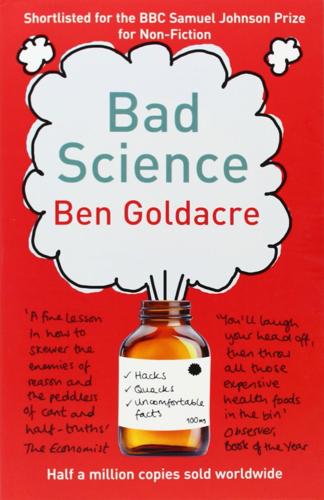
Bad Science
by
Ben Goldacre
Published 1 Jan 2008
He was pretty sure that this was because the medical students were carrying something nasty from the corpses in the dissection room, so he instituted proper handwashing practices with chlorinated lime, and did some figures on the benefits. The death rates fell, but in an era of medicine that championed ‘theory’ over real-world empirical evidence, he was basically ignored, until Louis Pasteur came along and confirmed the germ theory. Semmelweis died alone in an asylum. You’ve heard of Pasteur. Even when Edward Jenner introduced the much safer vaccination for protecting people against smallpox at the turn of the nineteenth century, he was strongly opposed by the London cognoscenti. And in an article from Scientific American in 1888 you can find the very same arguments which modern antivaccination campaigners continue to use today: The success of the anti-vaccinationists has been aptly shown by the results in Zurich, Switzerland, where for a number of years, until 1883, a compulsory vaccination law obtained, and smallpox was wholly prevented—not a single case occurred in 1882.
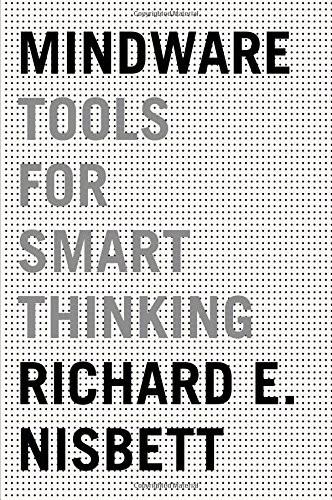
Mindware: Tools for Smart Thinking
by
Richard E. Nisbett
Published 17 Aug 2015
Such a study would examine the effects of ripping up concrete and putting in trees and weigh them against the cost in dollars. The analysis might show that the landscape change is a bargain for a city. Scientists often get their ideas when they realize that some observation they’ve made constitutes a natural experiment. The eighteenth-century physician Edward Jenner noticed that milkmaids rarely got smallpox, a disease related to the cowpox to which the milkmaids would have been exposed. Maybe milkmaids were less likely to get smallpox than butter churners because cowpox somehow protected against smallpox. Jenner found a young milkmaid with cowpox on her hand and inoculated an eight-year-old boy with some material from it.
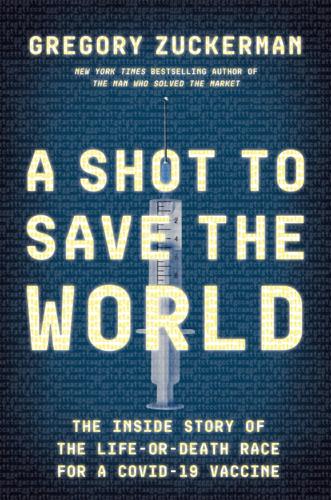
A Shot to Save the World: The Inside Story of the Life-Or-Death Race for a COVID-19 Vaccine
by
Gregory Zuckerman
Published 25 Oct 2021
Some fretted that Jesty’s needlework would turn his family into “horned beasts.” Eventually the Jesty clan was forced to flee for the Isle of Purbeck on the English Channel.3 Word spread about Jesty’s inoculations (and how the family remained hornless), and British doctors began attempting similar procedures. In 1796, a physician named Edward Jenner exposed an eight-year-old boy to cowpox; when Jenner later infected the boy with smallpox, the cowpox protected him from the disease without signs of even localized inflammation or infection. Jenner inoculated others as well. Unlike Jesty, Jenner evaluated his subjects, analyzed their results using proper scientific methods, and published his findings.
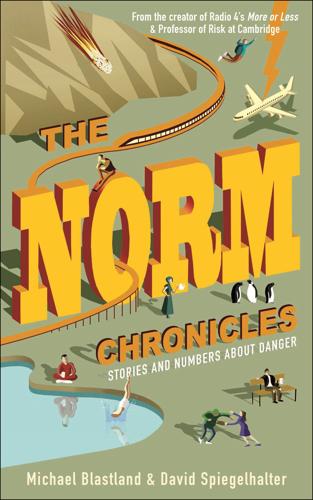
The Norm Chronicles
by
Michael Blastland
Published 14 Oct 2013
It helped Europeans conquer the Americas by almost wiping out the native populations. But it had long been observed that survivors did not contract the disease again, and the practice of inoculation developed, in which extracts from scabs were scratched onto the skin to give a deliberate but hopefully mild infection. Then in 1796 Edward Jenner used another, much milder disease, in this case cowpox, after it was noticed that milkmaids tended not to have smallpox. Hence vaccination, from the Latin vacca (‘cow’). Being scraped with pus taken from someone who had been exposed to an infected cow’s udder isn’t an obviously attractive idea, so naturally it was tried on a small boy – James Phipps, aged eight, the son of Jenner’s gardener.
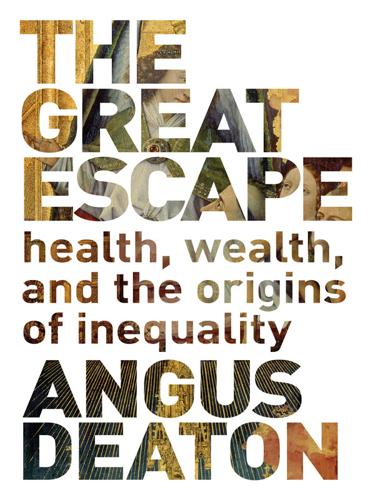
The Great Escape: Health, Wealth, and the Origins of Inequality
by
Angus Deaton
Published 15 Mar 2013
The inhabitants of towns and villages would often escape the disease for many years, but would have no immunity during an epidemic, and large numbers of both children and adults died. In Sweden in 1750, 15 percent of all deaths were due to smallpox. In London in 1740, there were 140 smallpox burials—mostly of children—for every 1,000 baptisms in the city. Variolation is not the same as vaccination, which was developed by Edward Jenner only in 1799, was widely and rapidly adopted thereafter, and is credited with major reductions in mortality. Variolation was an ancient technique, practiced in China and India for more than a thousand years, and also long established in Africa. Material was extracted from the pustules of someone suffering from smallpox and scratched into the arm of the person to be protected; in the African and Asian versions, dried scabs were blown into the nose.

Human Frontiers: The Future of Big Ideas in an Age of Small Thinking
by
Michael Bhaskar
Published 2 Nov 2021
The new chickens died; but the chickens previously injected with the old culture once again survived. Why would those chickens – against all reasonable expectations – live on? Upon hearing the news Pasteur fell silent, then ‘exclaimed as if he had a vision “Don't you see, these birds have been vaccinated!”’ 1 Vaccination had been known of since at least the late eighteenth century, when Edward Jenner realised that cowpox could create immunity to smallpox, a devastating killer.2 But until Pasteur no one had generalised from there to form a foundational medical principle. He saw the link between his spoilt culture, cowpox and immunity. Despite everyone knowing about vaccination, it was only he, at this moment, who made the decisive breakthrough.
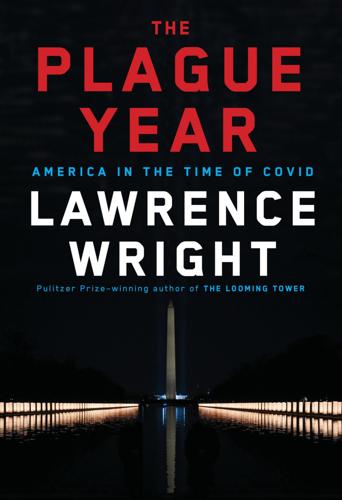
The Plague Year: America in the Time of Covid
by
Lawrence Wright
Published 7 Jun 2021
Roosevelt, who was crippled by polio (although more recent scholarship suggests he may have been misdiagnosed, and that he actually had contracted Guillain-Barré syndrome). Millions of dimes, many of them contributed by schoolchildren, established the National Foundation for Infantile Paralysis and led to FDR’s profile being put on the dime. Since 1796, when Edward Jenner created the first vaccine, for smallpox, the field of public health has been dogged by anti-vaccination movements. They are sometimes inspired by moral or religious sentiments, citing the use of animals or fetal tissue; or they may be swayed by political notions of individual liberty; but the main argument is the threat of disease caused by the vaccine itself.
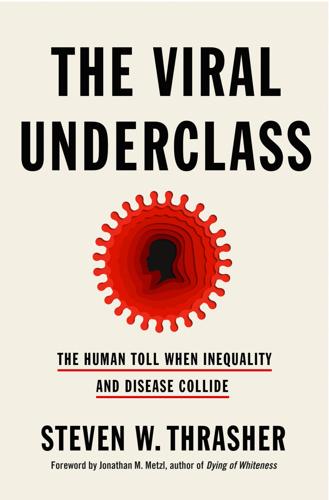
The Viral Underclass: The Human Toll When Inequality and Disease Collide
by
Steven W. Thrasher
Published 1 Aug 2022
All viruses are parasites in that they need a host to live, but not all parasites are microscopic viruses. Bacteria can reproduce outside a host, but while some viruses can live for a short while outside a host, they can’t reproduce outside one. In the late eighteenth century, English surgeon Edward Jenner developed a vaccine for smallpox, the only infectious disease in human history ever to be eradicated, and around 1880, French biologist Louis Pasteur developed a vaccine against cholera bacteria. But neither researcher pinpointed the microscopic virus we now understand as the causal agent of so much biological activity.

Geek Heresy: Rescuing Social Change From the Cult of Technology
by
Kentaro Toyama
Published 25 May 2015
They build, run, and manage institutions. They adapt, announce, and enforce policies. They set up, control, and administer systems. But, as essential as they are, implementers are rarely appreciated. Recognition goes to individual leaders such as Yunus rather than to frontline Grameen Bank employees. Or to Edward Jenner, who identified the smallpox vaccine, rather than to the health workers who administered the doses. Or to Wael Ghonim, who started a Facebook page, rather than to the nameless protesters in Tahrir Square. We could hardly tell the stories of interventions if we had to name every responsible party, but by overlooking implementers, we take good implementation for granted.
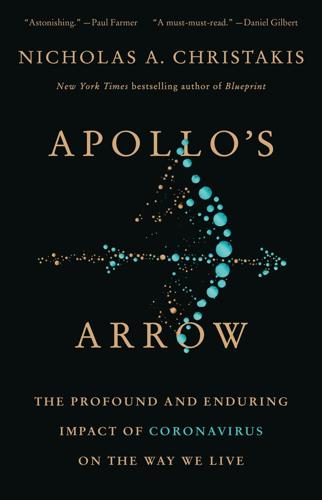
Apollo's Arrow: The Profound and Enduring Impact of Coronavirus on the Way We Live
by
Nicholas A. Christakis
Published 27 Oct 2020
This is old technology. Cowpox is a disease that usually infects cows, but it can sometimes infect humans too, giving them a mild disease that resembles smallpox (although smallpox is much deadlier). Noting the folk wisdom that milkmaids were immune to smallpox, on May 14, 1796, English physician Edward Jenner conducted an experiment. He scraped some pus from cowpox blisters on the hands of a milkmaid named Sarah Nelmes and then injected it into James Phipps, the eight-year-old son of his gardener (he conveniently overlooked the option of trying out the procedure on his own children). Jenner inoculated Phipps in both arms, and Phipps developed a fever and felt sick.
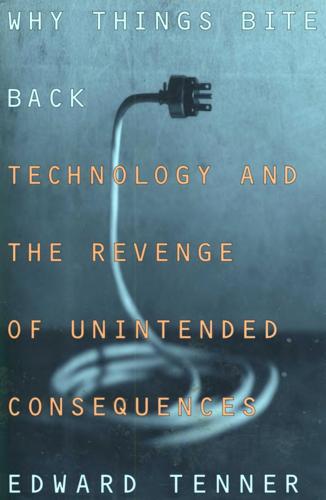
Why Things Bite Back: Technology and the Revenge of Unintended Consequences
by
Edward Tenner
Published 1 Sep 1997
Without the love of oceanside living, shore erosion yes, but no social disruption. Even more promising than diversification and dematerialization is an attitude that has not yet found its rightful name. It is the substitution of cunning for the frontal attack, and it is not new. It began with immunization against smallpox—as we have seen, a folk practice long before Edward Jenner introduced it to medicine—and continued with the vaccines of the late nineteenth and twentieth centuries. Finesse means abandoning frontal attacks for solutions that rely on the same kind of latent properties that led to revenge effects in the first place. Sometimes it means ceasing to suppress a symptom.

Frostbite: How Refrigeration Changed Our Food, Our Planet, and Ourselves
by
Nicola Twilley
Published 24 Jun 2024
” * * * — Bekvalac’s bones tell us that industrialization damaged human health; Craig’s calculations reveal that refrigeration helped ameliorate that: both reveal that the timespan under examination matters. The individuals whose skeletons are stored at the Museum of London all died before 1852. By then, Edward Jenner had invented the smallpox vaccine (1796), and John Snow had traced a cholera outbreak to a contaminated water pump (1849). But the City’s cemeteries closed before the Great Stink of 1858, which prompted the construction of London’s pioneering sewage system, and well before the first shipment of frozen beef and mutton arrived in the UK from Australia in 1879.

The Book of Woe: The DSM and the Unmaking of Psychiatry
by
Gary Greenberg
Published 1 May 2013
I’ll spare you the ensuing back-and-forth, which is as bitter and rancorous, and as impenetrable, as most academic controversies, and which continues more than fifteen years later. It’s not that it hasn’t been entertaining, at least at points, as when Biederman was moved to liken his critics to people who insist the earth is flat and circled by the sun, and his own discovery to that of Edward Jenner, whose “smallpox vaccine was ridiculed10 when initially proposed”—suggestive comparisons for a man studying a disorder with grandiosity among its symptoms. It also illustrates the bruising politics behind the DSM, the way in which changing it is as much a legislative as a scientific process, and the self-validating nature of diagnosis, by which once you’ve created a diagnostic category, the fact that people fit into it becomes evidence that the disorder exists.

Open: The Story of Human Progress
by
Johan Norberg
Published 14 Sep 2020
As the English economist and scientistinventor William Petty observed in 1679: when a new invention is first propounded, in the beginning every man objects, and the poor inventor runs the gantloop of all petulant wits […] not one of a hundred outlives this torture […] and moreover, this commonly is so long a doing that the poor inventor is either dead or disabled by the debts contracted to pursue his design.17 The smallpox vaccine at first seemed impossible – the Royal Society told its inventor Edward Jenner in 1798 ‘not to risk his reputation by presenting to this learned body anything which appeared so much at variance with established knowledge and withal so incredible’. Since the source of the vaccine was infected cows, it was also stupid: clergy objected to the ‘iniquity of transferring disease from the beasts of the field to Man’.
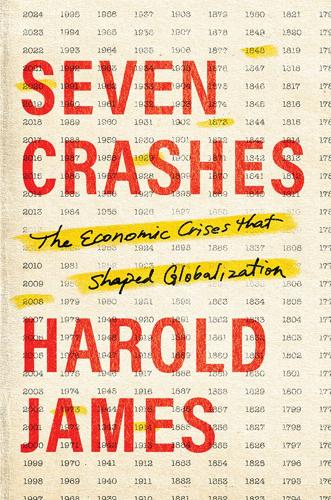
Seven Crashes: The Economic Crises That Shaped Globalization
by
Harold James
Published 15 Jan 2023
Aniline was isolated in 1826 by Otto Unverdorben, but only in 1854 did the reduction method developed by Antoine Béchamp allow the large-scale production of dyestuffs. Medical or pharmaceutical uses took longer, with a derivative synthesized in 1908, sulfanilamide, having extensive antibacterial uses. Some other medical discoveries required even more time to be extended across the world: Edward Jenner developed the practice of vaccination against smallpox in 1796, but it was 1977 before smallpox was completely eradicated. And Jenner’s son, sisters, and wife all died of tuberculosis, a disease for which a vaccine (Bacillus Calmette—Guérin, BCG) was first used in 1921. The long durations in which new innovations are developed and applied might be changed by new political constellations.
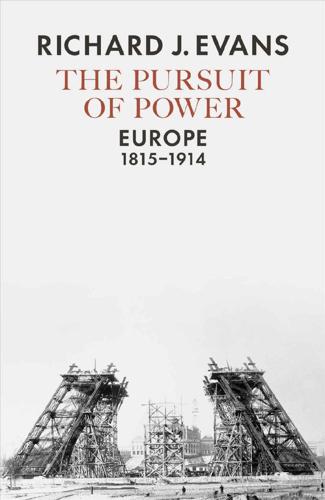
The Pursuit of Power: Europe, 1815-1914
by
Richard J. Evans
Published 31 Aug 2016
Medical intervention was also important, for example the widespread campaign to promote breastfeeding, the clearing of swamps (reducing the incidence of malaria, common throughout southern Europe and all the way up into the Rhine valley), and the improvement of public hygiene, at least in major European capital cities. The decline of smallpox, a major killer before the development of effective vaccination by Edward Jenner in 1798, also played a role, as did the relative absence of wars in Europe after the Battle of Waterloo. Birth rates also began to rise as a result of women marrying younger, increasing the excess of births over deaths that created population growth. The annual percentage rate of population growth was striking.
…
The practice of preventing the disease by scratching the skin with an infected needle, developed early on in China, was introduced to Europe via the Ottoman Empire in the mid-eighteenth century. Its treatment was revolutionized at the end of the century, in 1798, by an English country doctor, Edward Jenner (1749–1823), who noticed that milkmaids never caught smallpox, and concluded that the reason for their immunity was because they had already caught a related disease, cowpox, which did not pose any threat to humans. Jenner’s new preventive treatment, which he called vaccination, after the Latin for ‘cow’, soon became widely practised.

Computer: A History of the Information Machine
by
Martin Campbell-Kelly
and
Nathan Ensmenger
Published 29 Jul 2013
The system, which became operational in 1991, was effectively a catalog of catalogs that enabled a user to drill down and examine the contents of gopher databases maintained by hundreds of different institutions. All of these systems treated documents as individual entities, rather like books in a library. For example, when a system located a document about smallpox vaccine, say, it might tell the user that its inventor was Edward Jenner; in order to discover more about Jenner, the user would need to search again. The inventors of hypertext—Vannevar Bush in the 1940s and Engelbart and Nelson in the 1960s—had envisaged a system that would enable one to informally skip from document to document. At the press of button, as it were, one could leap from smallpox to Jenner to The Chantry in Gloucestershire, England (the house where Jenner lived and now a museum to his memory).

The Rational Optimist: How Prosperity Evolves
by
Matt Ridley
Published 17 May 2010
Here are the men who made canals (Thomas Telford), tunnels (Marc Brunel), steam engines (James Watt), locomotives (Richard Trevithick), rockets (William Congreve), hydraulic presses (Joseph Bramah); men who invented the machine tool (Henry Maudslay), the power loom (Edmund Cartwright), the factory (Matthew Boulton), the miner’s lamp (Humphry Davy) and the smallpox vaccine (Edward Jenner). Here are astronomers like Nevil Maskelyne and William Herschel, physicists like Henry Cavendish and Count Rumford, chemists like John Dalton and William Henry, botanists like Joseph Banks, polymaths like Thomas Young, and many more. You look at such a picture and wonder, ‘How did any one country have so much talent in the same place?’

Lifespan: Why We Age—and Why We Don't Have To
by
David A. Sinclair
and
Matthew D. Laplante
Published 9 Sep 2019
Just by washing up before surgery, we have profoundly improved the rates at which patients survive. Once we understood what the problem was, it was an easy problem to solve. For goodness’ sake, we solved it with soap. The idea of vaccines would also have sounded crazy to most people before the English physician Edward Jenner successfully used fluid he had gathered from a cowpox blister to inoculate an eight-year-old boy named James Phipps in what today would be an egregiously unethical experiment but at the time sparked a new era in immunological medicine. Indeed, the idea of giving a patient a little bit of a disease in order to prevent a lot of disease would have been seen as insane—even potentially homicidal—to many people until Jenner did it in 1796.

Blood in the Machine: The Origins of the Rebellion Against Big Tech
by
Brian Merchant
Published 25 Sep 2023
He would have seen The Manor of Huddersfield Enclosure Act of 1785 had brought the law home, which meant it would be enforced in his youth. 22. “For two centuries” Description of the root causes of inequality in England from Hammond and Hammond, Skilled Labourer, 2. 23. A vaccine was discovered Edward Jenner discovered the vaccine in 1796, and it was first made available two years later, and widely to the public soon after. 24. “the emergence of class differences” Romola Jane Davenport, Max Satchell, and Leigh Matthew William Shaw-Taylor, “The Geography of Smallpox in England before Vaccination: A Conundrum Resolved,” Social Science & Medicine, vol. 206 (June 2018), 75–85. 25.
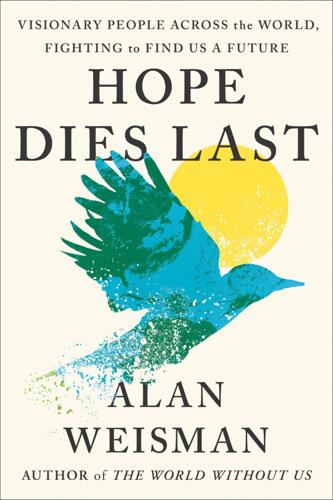
Hope Dies Last: Visionary People Across the World, Fighting to Find Us a Future
by
Alan Weisman
Published 21 Apr 2025
If several good harvests let settlements boom, drought or disease regularly knocked their numbers back. In those pre-vaccine days, epidemics were routine. Even with tribes competing to be fruitful and multiply to outmuscle surrounding tribes, our numbers rose so gradually that our population graph was nearly a flat line. In 1796, British surgeon Edward Jenner discovered a vaccine for smallpox, which had killed millions every year. The new century added treatments for rabies, anthrax, diphtheria, and tetanus. In 1815, 500 generations beyond the Mesopotamian cradle, human population reached 1 billion. In 1863, pasteurized milk began saving innumerable lives, followed by germ discoveries that led to disinfectants and antiseptics.

How the Scots Invented the Modern World: The True Story of How Western Europe's Poorest Nation Created Our World and Everything in It
by
Arthur Herman
Published 27 Nov 2001
The Hunters were bona fide figures of the Scottish Enlightenment. Edward Gibbon and Adam Smith both attended William’s lectures in the 1770s; John diagnosed David Hume’s fatal illness, and treated Smith for hemorrhoids. He passed on his great motto, “Don’t think, try,” to his most famous English student, Edward Jenner. It probably helped to inspire Jenner’s experiments with using cowpox inoculations to fight off its far deadlier relative, smallpox. Jenner gets the credit for inventing medical inoculation—although it was in fact another distinguished Scottish London physician, Charles Maitland, who first borrowed the technique from the Middle East and used it to protect his patients from smallpox outbreaks in the 1720s.

Editing Humanity: The CRISPR Revolution and the New Era of Genome Editing
by
Kevin Davies
Published 5 Oct 2020
Edwards, thank you for my life.”37 JK listed Edwards among his medical role models, along with the time it had taken for them to be duly recognized, in a PowerPoint presentation that he showed to his lab:38 Christiaan Barnard: Domestic, 3 weeks, International, 1 Year Robert Edwards: 7 years Edward Jenner: 1 year. Drawing encouragement from these examples of scientific trailblazers, JK imagined his own future reflected in their image: initially controversial perhaps, but ultimately celebrated as having been in the vanguard. It was all about having the courage to take a controversial first step—breaking the glass—and thereby pushing science and humanity forward.

Countdown: Our Last, Best Hope for a Future on Earth?
by
Alan Weisman
Published 23 Sep 2013
Occasionally, it contracted dramatically, such as during the Black Plague, which killed off an estimated one-fourth of humanity in the mid-fourteenth century. But even without unusual epidemics, the general pall of death that hung over every family didn’t began to dissolve until 1796. That year, British surgeon Edward Jenner discovered a vaccine for smallpox, a disease that used to knock back our numbers each year by the millions. Jenner’s cure was also the first vaccine for anything. It inspired nineteenth-century French chemist Louis Pasteur to develop others, against rabies and anthrax. Pasteur made two other key contributions to human survival.
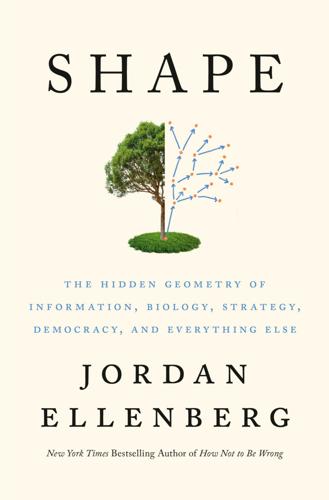
Shape: The Hidden Geometry of Information, Biology, Strategy, Democracy, and Everything Else
by
Jordan Ellenberg
Published 14 May 2021
Ross was knighted, he was given the directorship of a scientific institute named after him, he collected scientific honors like they were vintage Pez dispensers, but the hole was never filled. He spent years, though under no financial strain, publicly campaigning for Parliament to award him a monetary prize for his contribution to public health. Edward Jenner had gotten one in 1807 for developing the smallpox vaccine, and Ross felt he deserved no less. Possibly his lifelong peevishness stemmed from a lurking feeling he wasn’t following his true life’s path. Astonishingly for a doctor so distinguished, Ross says he entered the medical profession “merely and purely as a duty,” putting aside the two pursuits that truly sang to his heart.

The Code Breaker: Jennifer Doudna, Gene Editing, and the Future of the Human Race
by
Walter Isaacson
Published 9 Mar 2021
That substance could be a deactivated version of the virus or a safe fragment of the virus or genetic instructions to make that fragment. This is intended to kick the person’s immune system into gear. When it works, the body produces antibodies that will, sometimes for many years, fend off any infection if the real virus ever attacks. Vaccinations were pioneered in the 1790s by an English doctor named Edward Jenner who noticed that many milkmaids were immune to smallpox. They had all been infected by a form of pox that afflicts cows but is harmless to humans, and Jenner surmised that the cowpox had given the milkmaids immunity to smallpox. So he took some pus from a cowpox blister, rubbed it into scratches he made in the arm of his gardener’s eight-year-old son, and then (this was in the days before bioethics panels) exposed the kid to smallpox.

The Great Influenza: The Story of the Deadliest Pandemic in History
by
John M. Barry
Published 9 Feb 2004
David Hume, after this demonstration and following Locke, led a movement of “empiricism.” His contemporary John Hunter made a brilliant scientific study of surgery, elevating it from a barber’s craft. Hunter also performed model scientific experiments, including some on himself—as when he infected himself with pus from a gonorrheal case to prove a hypothesis. Then in 1798 Edward Jenner, a student of Hunter’s—Hunter had told him “Don’t think. Try.”—published his work. As a young medical student Jenner had heard a milkmaid say, “I cannot take the smallpox because I have had cowpox.” The cowpox virus resembles smallpox so closely that exposure to cowpox gives immunity to smallpox.
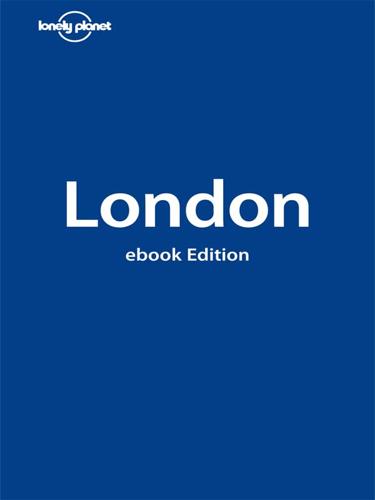
Lonely Planet London City Guide
by
Tom Masters
,
Steve Fallon
and
Vesna Maric
Published 31 Jan 2010
If you have kids, visit the Diana, Princess of Wales Memorial Playground, in the northwest corner of the gardens, which has some pretty ambitious attractions for children including tepees and a pirate ship. Art is also characteristic of these gardens. George Frampton’s celebrated Peter Pan statue is close to the lake. On the opposite side is a statue of Edward Jenner, who developed a vaccine for smallpox. To the west of the Serpentine is a sculpture of John Hanning Speke, the explorer who discovered the Nile. SERPENTINE GALLERY Map 7402 6075, recorded information 7298 1515; www.serpentinegallery.org; Kensington Gardens W2; admission free; 10am-6pm; Knightsbridge; What looks like an unprepossessing 1930s-style tearoom in the midst of the leafy Kensington Gardens is one of London’s most important contemporary art galleries.

How to Survive a Pandemic
by
Michael Greger, M.D., FACLM
“Show me almost any new infectious disease,” said the executive director of the Consortium of Conservation Medicine, “and I’ll show you an environmental change brought about by humans that either caused or exacerbated it.”923 To quote the comic-strip character Pogo, “We have met the enemy and he is us.”924 Two centuries ago, Edward Jenner, the founder of modern vaccines, proposed that the “deviation of man from the state in which he was originally placed by nature seems to have proved him a prolific source of diseases.”925 This observation dates back to the second century, when Plutarch argued that new classes of diseases followed profound changes in the way we live.926 The same can be said for animals.
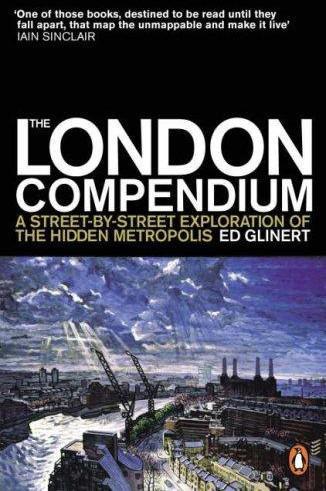
The London Compendium
by
Ed Glinert
Published 30 Jun 2004
north side: Tottenham Court Road to Bloomsbury Street No. 106 When the Second World War Home Guard refused to allow women to join their ranks, even though they were teaching male recruits to fire guns, fifty women, including Marjorie Foster, a winner of the King’s Prize for shooting, met here and formed the Amazon Defence Corps. Before long similar units had been set up across Britain. No. 62 The Bloomsbury Dispensary opened at this address in 1801 and employed as Superintendent of Inoculation Edward Jenner, who conducted pioneering work into vaccination, carrying out more than 800 inoculations over a ten-year period and treating all the children at the nearby Foundlings Hospital. No. 59 The travel pioneer Thomas Cook opened his first London office at this address in 1862. As the lease forbade him to advertise the business, he named the premises Cook’s British Museum Boarding House.

The Coming Plague: Newly Emerging Diseases in a World Out of Balance
by
Laurie Garrett
Published 31 Oct 1994
The deliberately induced epidemic quickly spread to the northwest, claiming large numbers of Sioux and Plains Indians, crossed the Rookies and inflicted huge death tolls among Native Americans from southern California all the way north to the Arctic Circle tribes of Alaska. This devastation was cited in the official WHO history of smallpox: Fenner, Henderson, Arita, et al., (1988), op. cit. 24 Fenner, Henderson, Arita, et al. (1988), op. cit. 25 English physician Edward Jenner discovered in 1796 that cowpox, which was harmless to people, could be used as a vaccine against smallpox. The riskier idea of inoculating people with small amounts of human smallpox to raise immunity goes back in some cultures to ancient times, although some people developed the disease after injection.
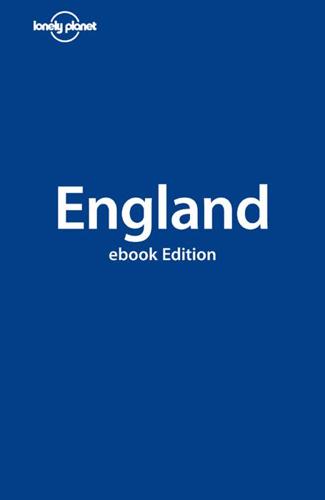
England
by
David Else
Published 14 Oct 2010
You can also visit the castle’s state rooms, as well as the medieval Great Hall, Picture Gallery and kitchen. Regular jousting events and medieval banquets are held here in summer. Berkeley is also home to the Jenner Museum (01453-810631; www.jennermuseum.com; Church Lane; adult/under 18yr £4.25/2.50; 12.30-5.30pm Tue-Sat, 1-5.30pm Sun Apr-Oct), which honours the life and works of Edward Jenner, country doctor and pioneer of vaccination. The museum is in the beautiful Queen Anne house, where the doctor performed the first smallpox vaccination in 1796. To get to the museum on foot, follow the path from the castle through St Mary’s churchyard. Bus 207 does the route between Berkeley and Gloucester (40 minutes, daily Monday to Saturday).